| TILLER as it exists now is comprised of twelve issues in two volumes. The first nine issues were printed on Hahnemuhle Ingres-Buttenpapier by the notorious Henry Morris at his Bird & Bull Press. The next three were printed at The Stinehour Press and The Meriden Gravure Company. All are traded on the rare book market in the few instances where the original subscriber or the subscriber's estate resells a set. TILLER's prospectus pronounced it would be "meticulously produced with the same reverence for process that was evident in the first Arts and Crafts periodicals." And it was. TILLER's prospectus declared, "TILLER stands apart for its artistic concept; the text is augmented by a format that physically represents the ideals of the Arts and Crafts philosophy." And it does. TILLER's prospectus promised, "Scholarly articles will explore hitherto uncharted utopias of the Arts and Craftsmen at the turn of the century." And they did. |
 |
VOLUME I, number 1: Harvey M. Kaplan celebrates the Dowling house (demolished in June 1982) designed by Walter H. Van Guysling and built in Albany, NY in 1909. The author expands the concept of American Arts and Crafts architectural style to include the seldom recognized but often used "Dutch Colonial." The long list of architects employing the style's distinctive parapet included George W. Maher, Harvey Ellis, and Will Price. William S. Ayres exposes the lacuna between Arts and Crafts philosophy and practice as exemplified by prominent proponents Will Price and Gustav Stickley. Prone to biblical hyperbole, Price points out the quartered-oak splinter in Stickley's eye while failing to remove the log from his own pious pupil. Mary Ann Smith also takes us beyond the standard mission bungalow to discuss extant Craftsman interiors she discovered during research for her 1983 book. The dining room of the soon-to-be cannibalized Evans house is photographically documented. Stickley's Pottery Barn marketing technique is examined. |
 |
VOLUME I, number 2: Cleota Reed places Henry Chapman Mercer's reproduction medieval tiles in an Arts and Crafts context. The modernity of Mercer and his fellow Pennsylvanians Will Price and Jane Byrd McCall Whitehead is often hidden in the romantic folds of Pre-Raphaelite pageantry. Neville Thompson reveals the ways that Addison Le Boutillier tried to freshen the already famous Grueby green designs that were much in need of revitalizing by 1901 when he joined the pottery. He added sailing ships, saintly fauna, and human figures to the Grueby vocabulary that was criticized for monotonous motifs relying on leafy flora. Jane Perkins Claney documents Edwin AtLee Barber's attempts to get recognition for Adelaide Robineau in Philadelphia. Then, as now, conservative Philadelphians failed to heed prophets in their own land, and many pieces of art pottery Barber acquired for the Pennsylvania Museum and School of Industrial Art, including Robineau's "Monogram Vase," were later deaccessioned by the Philadelphia Museum of Art. |
 |
VOLUME I, number 3: Perhaps our most ambitious issue, "The Rose in Arts and Crafts" explores the many ways the rose developed into an icon of the Arts and Crafts Movement. Twenty-one essays include a discussion of Yeats and the mystic rose by David Perkins professor of English and American Literature at Harvard; an analysis of the way the artists of the Glasgow School stylized the blossom by Frederick Brandt, curator of decorative arts at the Virginia Museum of Art; Dard Hunter II's account of how his father designed the rose that became a symbol for Roycroft; and Rowland Elzea's unraveling of the secrets in the Burne-Jones tapestry series based on The Romaunt of the Rose. Each essay is illustrated, some by hand-colored illustrations drawn especially for this issue, others with photographs of previously unpublished objects and interiors. An actual sample of Voysey's Briar Rose wallpaper design as reproduced by Bradbury & Bradbury forms the frontispiece. |
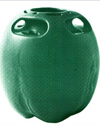 |
VOLUME I, number 4: Diana Stradling writes about the craze for matte-green art pottery in "Teco Pottery and the Green Phenomenon." As collectors know, Teco pottery itself has become a "green phenomenon" in recent years. Ronald L.M. Ramsay produces the first major study of John Scott Bradstreet and his Minneapolis Crafthouse. Because Bradtreet's production was limited in comparison to the output of companies like Roycroft, his eccentric designs were considered to be of only regional importance until we published this article. With the restoration of the Prindle House as evidence, Bradstreet can now be favorably compared to the Greene brothers of California. Cheryl Robertson, who in 1999 produced the exhibition and catalogue, "Frank Lloyd Wright and George Mann Niedecken: Prairie School Collaborators," elaborates on the designs George Niedecken made for murals that were executed for several Wright houses. The most famous of these commissions were for the Susan Dana and Avery Coonley houses. |
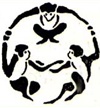 |
VOLUME I, number 5: This issue reviews the state of the art of writing about the Arts and Crafts Movement by modern historians and records what Arts and Craftsmen actually living the simple life had to say for themselves. The issue also includes a list of the locations of primary Arts and Crafts Movement documents as of 1983. Bruce R. Kahler critiques the views of contemporary historians who were interpreting the Movement in the broad context of its era but who were not necessarily knowledgeable about the nuances of its philosophy. "The Craftsman's Library" is reprinted to illustrate what was thought essential at the turn of the last century. The author was much more interested in manuals about making things than books about proper Arts and Crafts thinking. He suggested sorting these manuals by binding them in various colors of buckram: "One color for books on metal-working; another color for books on woodworking; brown for works on textiles; blue for works on design; dark green [of course] for works on pottery, etc." |
 |
VOLUME I, number 6: Rockledge, a summer home in Wisconsin designed by George W. Maher to the last detail including the curtains and tea service, is documented by Gary Hollander. The issue includes a period postcard showing this now-destroyed Arts and Crafts landmark. Diana Balmori delineates the principles of the Arts and Crafts garden as practiced by such famous gardeners as Gertrude Jekyll. Balmori quotes Ruskin about the gardening tricks of Mother Nature who, he says, uses only bluish purple flowers for distant effect. Patricia Pelehach runs down the often amusing but very important efforts of the physical culturalists to include health in the regime of living the simple life. Even Elbert Hubbard specified how many times a good Roycrofter should chew food for the best digestion. |
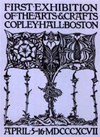 |
VOLUME II, number 1: Beverly K. Brandt writes what is essentially the preamble for the 1997 exhibition, "Inspired Reform: Boston's Arts and Crafts Movement." She points out the controlling roles of architects such as Ralph Adams Cram and Bertram Goodhue in the founding of the Society of Arts and Crafts, Boston. Jane Perkins Claney and Robert Edwards, while writing about the furniture designs of David Kendall, tell the story of how Americans modified the British Arts and Crafts philosophy to embrace mass production and big industry, the very things Morris and his compatriots were railing against. |
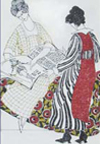 |
VOLUME II, number 2: Clark Pearce explores an example of regionalism in the American Arts and Crafts Movement. Mary Chase Perry Stratton was a founder of the Detroit Society of Arts and Crafts and the iridescent pots she made at her Pewabic Pottery remain glowing examples of the best of the Movement's production. Sally Kinsey looks under the skirts of modern women who, at the turn of the twentieth century, uncinched their corsets and flung away their bustles in order to lead the simple life as nature intended. Some women blossomed in bloomers while others danced over hillside meadows wearing diaphanous "Greek" gowns. The less adventurous stayed at home where they eschewed elaborate morning dresses constructed for them by couturiers in favor of housedresses that they often sewed on their own sewing machines. |
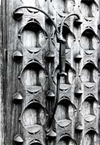 |
VOLUME II, number 3: Jack Andrews' extensive research on the iron work of Samuel Yellin places the Philadelphia master in his rightful position as the premier artist in iron in America. A blacksmith himself, Andrews is able to understand and explain the subtleties that made Yellin's work so important. Elenita C. Chickering describes the gold pyx made in Arthur Stone's shops for the Church of the Advent in Boston. Although often overlooked in decorative arts surveys, ecclesiastical objects usually exhibit the best and most lavish efforts of their creators. Irma Strauss, a passionate mover and shaker in Chicago, writes a letter to the editor making a plea to stop the scandalous destruction of that city's rich architectural legacy. Her letter is illustrated by three photographs documenting the pathetic stages of ruin inflicted on the Albert Sullivan House designed by Louis Sullivan.
|
 |
VOLUME II, number 4: In an effort to codify a definition of Arts and Crafts, we publish several accounts from the beginning of the twentieth century. Clark Pearce illustrates the dichotomy that existed even while the style flourished with his description of the "mission" library in the 1909 McFaddin-Ward House that was otherwise decorated in the rococo style that gave the Gilded Age its name. Rowland Elzea identifies the long-lost Viking Ship Window. This panel was part of a set designed by Edward Burne-Jones and produced by Morris & Co. for "Vinland," the Newport Rhode Island home of Catherine Lorillard Wolfe. |
 |
VOLUME II, number 5: Kenneth R. Trapp documents the Shop of the Crafters, a factory making furniture designed in the Arts and Crafts mode. This Cincinnati manufacturer produced designs unusual in America in that they relied heavily on the (then progressive) designs emanating from Germany. Beverly Brandt further explores Boston's version of Arts and Crafts style. Designs based on Colonial models pervaded the production of the Arts and Crafts society there and, in some cases, only an expert such as Brandt can explain how these pieces are not simply reproductions. |
 |
VOLUME II, number 6: As in her previous article, Elenita C. Chickering uses ecclesiastical objects to elucidate aspects of the Movement seldom considered. In this instance, two book covers are the result of the cooperative efforts of designer Bertram Goodhue, silversmith Arthur Stone, and carver Johannes Kirchmayer. Thomas Beckman uncovers the forgotten work of Everett Johnson, who operated the Press of Kells in Delaware. Jane Perkins Claney outlines the domestic designs of Philadelphia architects such as Wilson Eyre, Charles Barton Keene, and the firm of Mellor and Meigs. Magazines like House & Garden were published in Philadelphia, and they listed many area architects among their contributors. Thus the designs for country houses built in the Philadelphia suburbs became nationally influential. |























